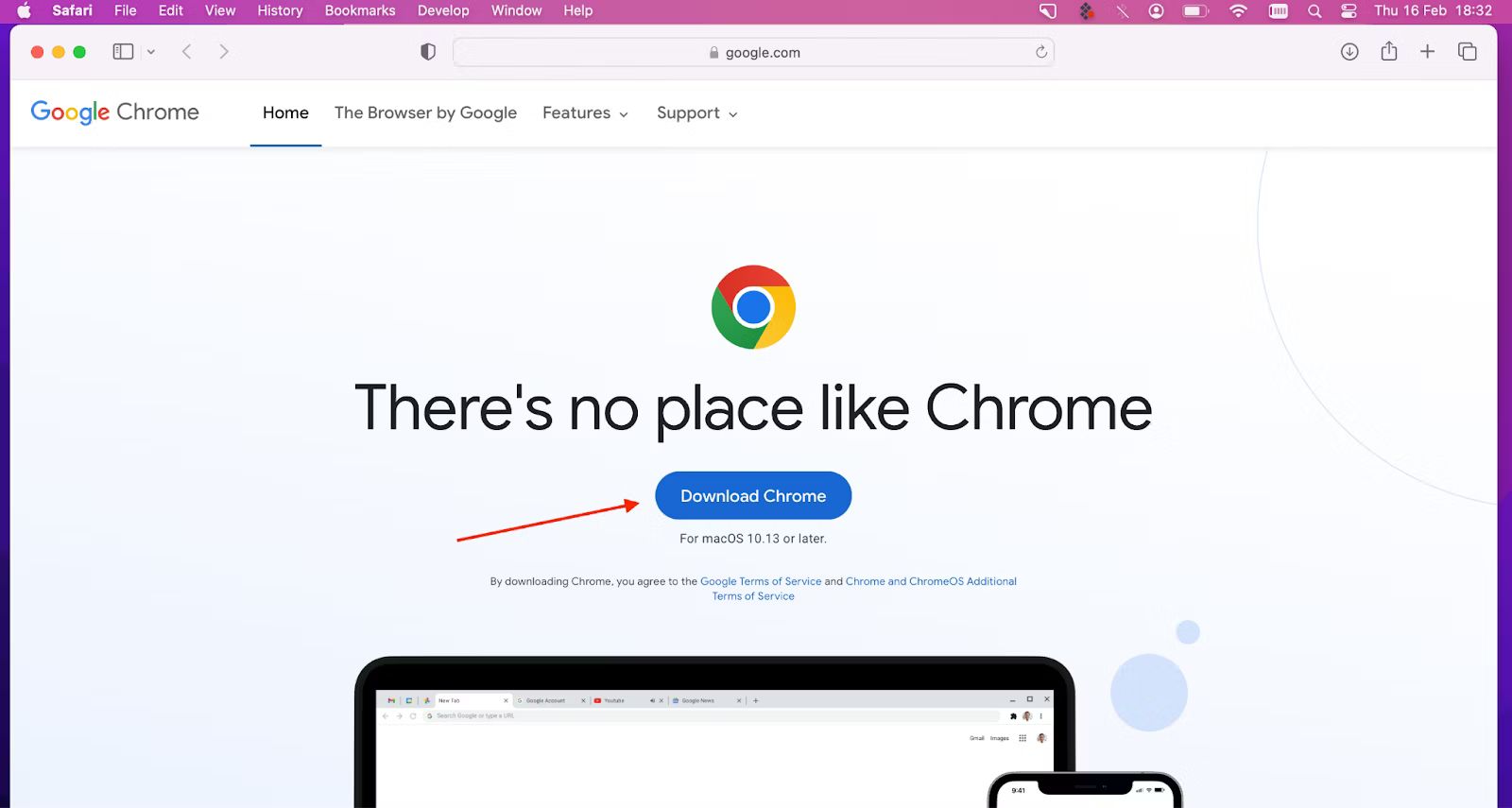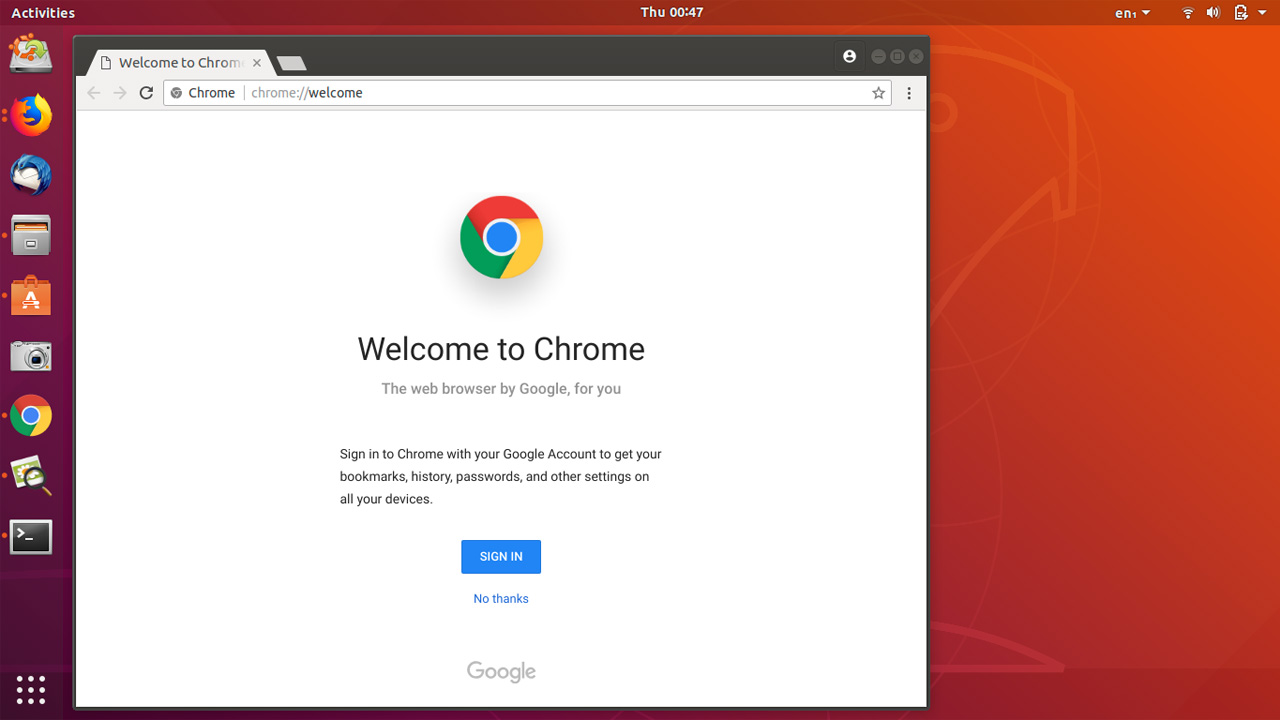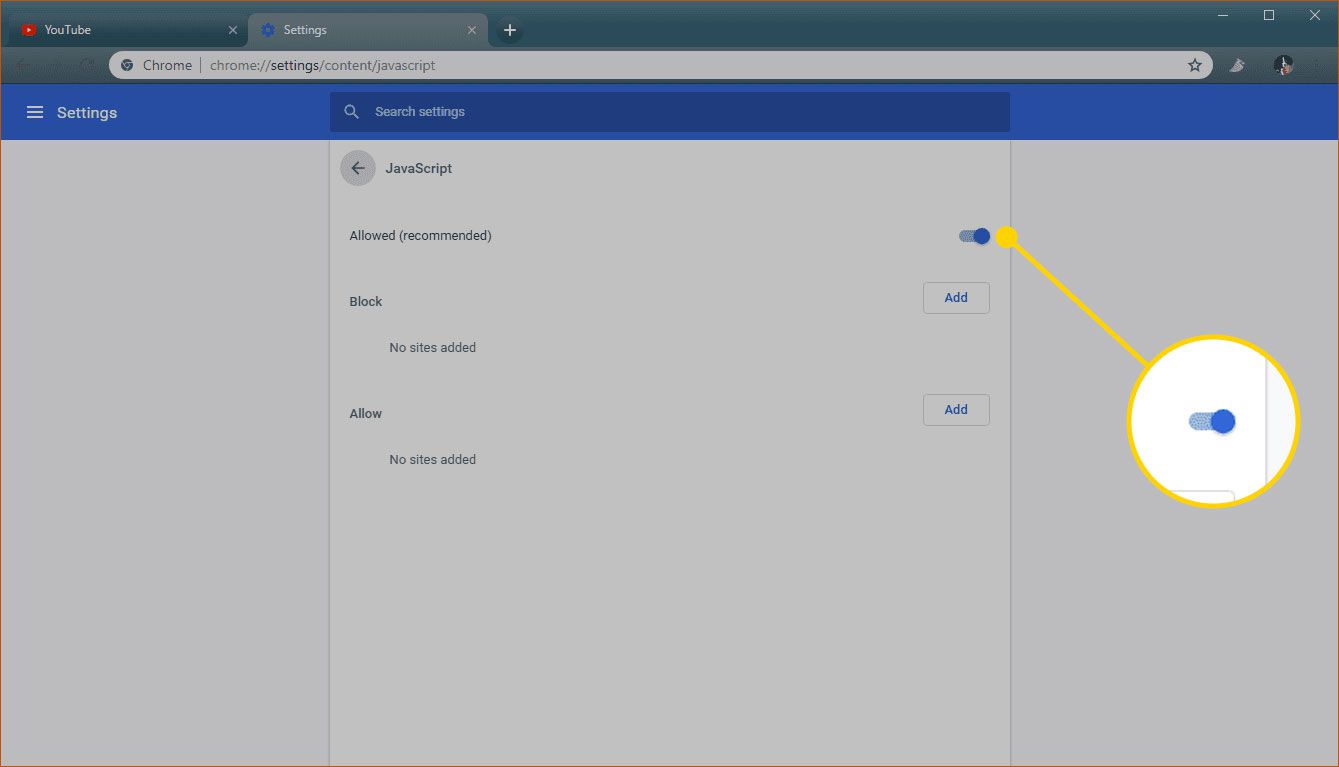Introduction
When it comes to browsing the web, Google Chrome stands out as one of the most popular and versatile web browsers available. Its user-friendly interface, extensive range of extensions, and seamless integration with various devices make it a top choice for millions of users worldwide. However, despite its numerous advantages, some users may encounter slow download speeds when using Chrome. This can be frustrating, especially when trying to download important files or stream media content.
Fortunately, there are several effective strategies to enhance the download speed within Chrome. By implementing these techniques, users can optimize their browsing experience and enjoy faster downloads without compromising on the browser's functionality. From checking internet connectivity to utilizing download manager extensions, each method plays a crucial role in streamlining the download process.
In this comprehensive guide, we will explore various methods to accelerate download speeds in Chrome. Whether you're downloading large files, streaming high-definition videos, or simply looking to improve overall browsing performance, these strategies will help you make the most of your Chrome browsing experience. Let's dive into the details and discover how to turbocharge your download speeds in Chrome.
Check Your Internet Connection
Before delving into browser-specific optimizations, it's essential to ensure that your internet connection is performing at its best. Slow download speeds can often be attributed to network issues, so conducting a thorough check of your internet connectivity is the first step in troubleshooting the problem.
Begin by running a speed test using a reliable online tool to measure your current download and upload speeds. This will provide valuable insights into the actual performance of your internet connection. Ideally, you should compare the results with the promised speeds from your internet service provider (ISP). If the test reveals significantly lower speeds than expected, it's crucial to address this issue with your ISP to resolve any potential network-related issues.
Furthermore, consider the type of connection you are using. For instance, if you are on a wireless network, factors such as signal strength, interference from other devices, and the distance from the router can impact download speeds. In such cases, relocating closer to the router or using a wired Ethernet connection can significantly improve download speeds.
Another aspect to consider is the time of day. Internet traffic during peak hours can lead to slower download speeds due to network congestion. If possible, schedule your downloads during off-peak hours to take advantage of faster network speeds.
In addition to these considerations, it's important to check for any ongoing background processes or applications that may be consuming bandwidth. Updates, cloud backups, or streaming services running in the background can significantly impact download speeds. By pausing or scheduling these activities, you can allocate more bandwidth to your downloads, resulting in improved speeds.
By thoroughly examining and optimizing your internet connection, you can lay a solid foundation for enhancing download speeds within Google Chrome. Once you've confirmed that your internet connection is performing optimally, you can proceed to explore additional strategies to further boost download speeds within the browser.
Clear Browser Cache
Clearing the browser cache is a fundamental step in optimizing download speeds within Google Chrome. Over time, the cache accumulates a substantial amount of temporary files, cookies, and website data. While this data is intended to enhance browsing efficiency by storing frequently accessed information, an overloaded cache can lead to sluggish performance, including slow download speeds.
To clear the browser cache in Chrome, start by accessing the browser's settings. Click on the three-dot menu icon in the top-right corner of the browser window, then select "Settings" from the dropdown menu. Within the Settings menu, navigate to the "Privacy and security" section and click on "Clear browsing data." This will open a window where you can select the types of data to clear. Ensure that "Cached images and files" is checked, and then click on the "Clear data" button to initiate the process.
By clearing the cache, you effectively remove the clutter of accumulated data, allowing Chrome to retrieve fresh information from websites, resulting in improved download speeds. Additionally, this process can resolve compatibility issues and eliminate corrupted or outdated cache files that may hinder the browser's performance.
It's important to note that clearing the cache may log you out of websites and erase certain preferences, such as saved passwords. However, the trade-off for enhanced download speeds and overall browsing performance makes this inconvenience worthwhile.
In addition to manually clearing the cache, Chrome offers the option to automate this process. Within the "Privacy and security" section of the Settings menu, you can access the "Clear browsing data" option and set up automatic cache clearing. By scheduling regular cache cleanups, you can maintain optimal browser performance without the need for manual intervention.
By incorporating cache clearing into your routine browser maintenance, you can ensure that Chrome operates at peak efficiency, leading to faster download speeds and an overall smoother browsing experience. This simple yet effective strategy can significantly contribute to maximizing the potential of Google Chrome as a versatile and high-performing web browser.
Disable Unnecessary Extensions
Google Chrome's extensive library of extensions offers users a wide range of functionalities, from productivity tools to entertainment add-ons. While these extensions can enhance the browsing experience, having an excessive number of them installed can lead to decreased browser performance, including slower download speeds. Disabling unnecessary extensions is a crucial step in optimizing Chrome for faster downloads and overall improved functionality.
To begin, access the extensions menu by clicking on the three-dot menu icon in the top-right corner of the browser window and selecting "More tools" followed by "Extensions." This will display a list of all installed extensions, along with options to enable, disable, or remove them.
When evaluating which extensions to disable, consider their relevance to your browsing habits and the frequency of their usage. Extensions that are rarely utilized or serve a specific purpose that aligns with infrequent tasks can be candidates for disabling. Additionally, extensions that run background processes or consume system resources can contribute to decreased browser performance, impacting download speeds.
By disabling unnecessary extensions, you reduce the strain on Chrome's resources, allowing it to allocate more processing power and bandwidth to essential tasks such as downloading files. This streamlined approach enhances the browser's efficiency and responsiveness, resulting in faster and more reliable download speeds.
Furthermore, periodically reviewing and managing extensions is essential for maintaining an optimized browsing environment. As new extensions are installed over time, it's important to reassess their utility and impact on browser performance. Regularly disabling or removing unnecessary extensions ensures that Chrome remains lean and efficient, contributing to improved download speeds and a seamless browsing experience.
In addition to manually disabling extensions, Chrome provides the option to suspend or disable extensions that are not in use. This feature, accessible through the extensions menu, allows you to temporarily deactivate extensions, conserving system resources and potentially boosting download speeds without the need for permanent removal.
By taking a proactive approach to managing extensions and disabling those that are unnecessary or resource-intensive, users can unlock the full potential of Google Chrome as a high-performance web browser. This optimization not only accelerates download speeds but also contributes to a smoother and more responsive browsing experience overall.
Use a Download Manager Extension
Integrating a download manager extension into Google Chrome can significantly enhance the efficiency and speed of file downloads. While Chrome's built-in download capabilities are functional, a dedicated download manager offers advanced features and customization options that streamline the downloading process.
One of the key advantages of using a download manager extension is the ability to manage and prioritize multiple downloads simultaneously. These extensions often provide a centralized dashboard or interface where users can view, organize, and monitor ongoing downloads. This feature is particularly beneficial when handling large files or multiple downloads, as it allows users to allocate bandwidth and resources efficiently, resulting in faster overall download speeds.
Furthermore, download manager extensions often offer advanced scheduling options, enabling users to set specific times for downloads to commence. This feature is especially useful for leveraging off-peak hours to maximize network speeds and minimize potential congestion, ultimately leading to faster download completion times.
Another notable benefit of download manager extensions is their support for pause and resume functionality. In the event of a network interruption or the need to prioritize bandwidth for other tasks, users can pause ongoing downloads and seamlessly resume them at a later time. This flexibility ensures that download progress is not lost and allows for optimal utilization of available network resources.
Additionally, many download manager extensions integrate with cloud storage services, allowing for direct downloads to cloud storage accounts. This integration eliminates the need to download files to local storage before transferring them to cloud repositories, streamlining the process and potentially accelerating download speeds.
Moreover, some download manager extensions offer built-in acceleration technologies that optimize the download process by leveraging multiple connections and advanced algorithms. These technologies can significantly boost download speeds, especially for larger files or content hosted on high-capacity servers.
By incorporating a download manager extension into Google Chrome, users can harness a range of advanced features and optimizations to expedite the download process. Whether managing multiple downloads, scheduling tasks, or leveraging acceleration technologies, these extensions empower users to maximize their download speeds and overall browsing efficiency.
Update Chrome and Operating System
Keeping Google Chrome and the underlying operating system up to date is a crucial aspect of maintaining optimal performance and download speeds. Both Chrome browser updates and operating system updates often include bug fixes, security patches, and performance enhancements that can directly impact the browser's functionality, including download capabilities.
Chrome Updates
Google regularly releases updates for the Chrome browser to address security vulnerabilities, improve stability, and introduce new features. These updates are designed to enhance the overall browsing experience and optimize performance, including download speeds. By ensuring that Chrome is running the latest version, users can take advantage of these improvements to streamline the download process.
To check for Chrome updates, users can access the browser's settings and navigate to the "About Chrome" section. Here, Chrome will automatically check for updates and prompt users to install the latest version if one is available. It's important to enable automatic updates to ensure that Chrome remains current and benefits from the latest optimizations.
Operating System Updates
In addition to Chrome updates, maintaining an updated operating system is equally important for maximizing download speeds within the browser. Operating system updates, whether for Windows, macOS, or Linux, often include performance enhancements, driver updates, and security fixes that can directly impact the overall system performance, including network connectivity and resource allocation.
Users should regularly check for and install operating system updates through the respective update mechanisms provided by their operating systems. These updates not only contribute to a more secure and stable computing environment but also play a significant role in optimizing network connectivity and system-level processes that can influence download speeds within Chrome.
By prioritizing the regular updating of both Google Chrome and the operating system, users can ensure that their browsing experience remains efficient and secure. These updates not only address potential performance bottlenecks but also introduce optimizations that directly contribute to faster and more reliable download speeds.
In summary, staying current with Chrome and operating system updates is a proactive strategy for maintaining an optimized browsing environment and maximizing download speeds within Google Chrome. By embracing the latest enhancements and security patches, users can unlock the full potential of the browser and enjoy a seamless and efficient downloading experience.
Disable Hardware Acceleration
Hardware acceleration, while designed to improve performance by offloading certain tasks to the GPU, can sometimes lead to unexpected issues, including slow download speeds, especially on systems with older or incompatible graphics hardware. Disabling hardware acceleration within Google Chrome can potentially resolve these issues and contribute to a smoother browsing experience with faster download speeds.
To disable hardware acceleration in Chrome, start by accessing the browser's settings. Click on the three-dot menu icon in the top-right corner of the browser window, then select "Settings" from the dropdown menu. Within the Settings menu, scroll down and click on "Advanced" to reveal additional options. Under the "System" section, you will find the "Use hardware acceleration when available" toggle. Simply switch this option off to disable hardware acceleration.
By disabling hardware acceleration, Chrome will rely on software rendering for graphics-intensive tasks, which can alleviate compatibility issues and improve overall browser performance, including download speeds. This adjustment can be particularly beneficial for users experiencing slowdowns during downloads or while streaming media content.
It's important to note that while disabling hardware acceleration can address certain performance issues, it may impact the rendering of complex web content, particularly on graphics-intensive websites or applications. Users should monitor their browsing experience after making this adjustment to ensure that it aligns with their expectations and requirements.
In cases where hardware acceleration is causing compatibility or performance issues, disabling this feature can serve as a viable solution to optimize Chrome for faster download speeds and a more responsive browsing experience. By leveraging software rendering for graphics processing, users can mitigate potential hardware-related bottlenecks and unlock the full potential of Google Chrome as a high-performance web browser.
Use a Different DNS Server
Utilizing a different Domain Name System (DNS) server can significantly impact the browsing experience and download speeds within Google Chrome. The DNS server plays a crucial role in translating human-readable website addresses into machine-readable IP addresses, facilitating the connection between a user's device and the desired web content. By default, devices often use the DNS server provided by their internet service provider (ISP). However, switching to an alternative DNS server, such as those offered by public DNS providers like Google DNS, OpenDNS, or Cloudflare, can yield tangible improvements in browsing performance and download speeds.
One of the primary advantages of using a different DNS server is the potential for faster and more reliable DNS resolution. Public DNS providers often leverage advanced infrastructure and optimized routing to deliver speedy responses when translating domain names into IP addresses. This streamlined DNS resolution process can result in quicker website access and more responsive browsing, ultimately contributing to faster download initiation and completion times within Google Chrome.
Furthermore, alternative DNS servers may offer enhanced security features, such as built-in protection against phishing attempts, malware-infected websites, and other online threats. By leveraging the security capabilities of reputable public DNS providers, users can mitigate potential risks and safeguard their browsing activities, creating a safer and more secure environment for downloading files and accessing online content.
In addition to performance and security benefits, using a different DNS server can also provide access to advanced features and customization options. Some public DNS providers offer configurable settings that allow users to tailor their DNS resolution preferences, optimize caching behavior, and implement filtering or parental control features. These capabilities empower users to fine-tune their DNS experience, potentially leading to improved download speeds and a more personalized browsing environment.
Switching to a different DNS server is a straightforward process that involves configuring the DNS settings on the user's device or router to point to the preferred public DNS provider. Once implemented, the new DNS server takes over the responsibility of resolving domain names, offering the potential for enhanced performance, security, and customization within Google Chrome.
In summary, leveraging a different DNS server presents an opportunity to optimize the browsing experience and maximize download speeds within Google Chrome. By tapping into the advanced infrastructure, security features, and customization options offered by public DNS providers, users can elevate their browsing efficiency and enjoy faster, more secure downloads.
Conclusion
In conclusion, optimizing download speeds within Google Chrome involves a multifaceted approach that encompasses various aspects of internet connectivity, browser settings, and system configurations. By implementing the strategies outlined in this guide, users can effectively enhance their browsing experience and expedite the download process, ultimately maximizing the potential of Google Chrome as a high-performance web browser.
From the initial step of checking internet connectivity to exploring advanced optimizations such as using a different DNS server, each strategy plays a crucial role in streamlining the download experience. By ensuring a stable and efficient internet connection, users lay a solid foundation for faster downloads, while clearing the browser cache and disabling unnecessary extensions contribute to a leaner and more responsive browsing environment.
The utilization of download manager extensions introduces advanced features such as scheduling, prioritization, and acceleration, empowering users to manage downloads with precision and efficiency. Additionally, keeping Google Chrome and the operating system up to date is essential for leveraging the latest enhancements and optimizations that directly impact download speeds and overall browser performance.
Disabling hardware acceleration and exploring alternative DNS servers offer additional avenues for fine-tuning the browsing experience, addressing potential compatibility issues, and unlocking faster and more reliable download speeds. By embracing these strategies, users can navigate the digital landscape with confidence, knowing that their browsing environment is optimized for efficiency, security, and speed.
In essence, the journey to accelerating download speeds within Google Chrome is a dynamic and iterative process that involves continuous optimization and adaptation. By integrating these strategies into their browsing habits, users can harness the full potential of Google Chrome as a versatile and high-performance web browser, ensuring that their download experiences are seamless, efficient, and tailored to their specific needs.
As technology continues to evolve, so too will the strategies for optimizing download speeds within Google Chrome. By staying informed and proactive, users can navigate the ever-changing digital landscape with ease, confident in their ability to maximize the performance and capabilities of their preferred web browser.

























